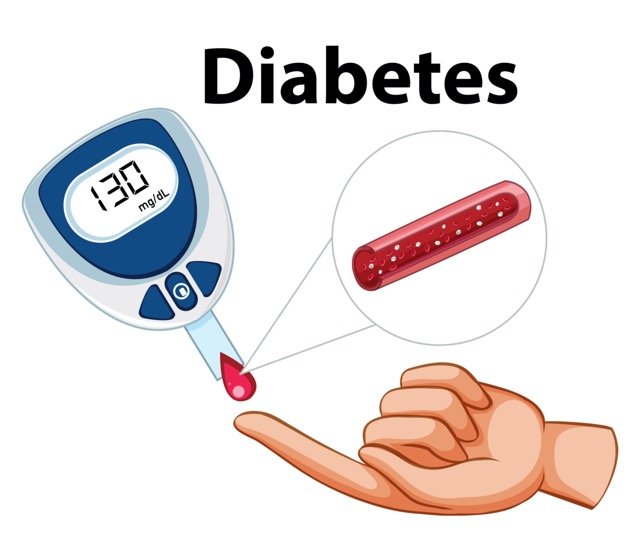Metipranolol is a non-selective beta-adrenergic antagonist (beta-blocker) primarily used in the form of eye drops to treat increased intraocular pressure (IOP) in patients with ocular hypertension or open-angle glaucoma. By reducing the production and increasing the outflow of aqueous humor in the eye, metipranolol helps lower IOP, thereby reducing the risk of optic nerve damage and visual field loss.
Metipranolol (Betanol) is a non-selective beta-blocker that is used in the treatment of patients with raised intraocular pressure and glaucoma.
Metipranolol (Betanol) Uses:
- High intraocular pressure:
- Treatment for patients with persistent open-angle glaucoma or ocular hypertension involves raising intraocular pressure.
Dose in Adults:
Metipranolol (Betanol) Dose in the treatment of Elevated intraocular pressure:
- Metipranolol is an eye drop used to treat high eye pressure.
- For this, put 1 drop in the affected eye(s) two times a day.
Use in Children:
Not indicated.
Pregnancy Risk Factor C
- Some animal studies have shown negative effects when using metipranolol during pregnancy.
- The side effects seen when taking beta-blockers as pills can also happen when using metipranolol as eye drops.
- If a pregnant person needs eye drops for glaucoma, they should use the smallest dose that works and try to limit the amount that gets into the body to protect the baby.
Metipranolol use during breastfeeding:
- We don't know if metipranolol passes into breast milk.
- If a breastfeeding mom needs to use this eye drop, she should be careful.
- She should use the smallest effective dose and try techniques like punctal occlusion to limit the amount the baby might be exposed to.
Dose in Kidney Disease:
- The manufacturer doesn't give special dosing instructions for people with kidney problems.
- But it's likely not needed since very little of the medicine gets into the body when used as eye drops.
Dose in Liver disease:
- The manufacturer doesn't provide specific dosing instructions for people with liver issues.
- But adjusting the dose is probably not needed since very little of the medicine enters the body when used as eye drops.
Side effects of Metipranolol (Betanol):
- Gastrointestinal:
- Nausea
- Cardiovascular:
- MI
- Palpitation
- Bradycardia
- Hypertension
- Angina
- Atrial Fibrillation
- Dermatologic:
- Rash
- Central Nervous System:
- Nervousness
- Somnolence
- Dizziness
- Headache
- Anxiety
- Depression
- Neuromuscular & Skeletal:
- Arthritis
- Weakness
- Myalgia
- Ocular:
- Blurred Vision
- Conjunctivitis
- Abnormal Vision
- Blepharitis
- Discomfort
- Photophobia
- Tearing
- Edema
- Eyelid Dermatitis
- Uveitis
- Miscellaneous:
- Allergic Reaction
- Respiratory:
- Dyspnea
- Epistaxis
- Bronchitis
- Cough
- Rhinitis
Contraindications to Metipranolol (Betanol):
Don't use metipranolol if you:
- Are allergic to it or any of its ingredients.
- Have had asthma or have a history of asthma.
- Have severe lung disease (COPD).
- Have a very slow heartbeat (sinus bradycardia).
- Have specific heart rhythm issues (second- or third-degree AV block).
- Have heart failure.
- Have a condition where your heart can't pump blood properly (cardiogenic shock).
Warnings and precautions
Anaphylactic reactions
- If you've had severe allergic reactions before, be careful when using beta-blockers like metipranolol.
- They might make you more sensitive to allergens.
- Also, if you have an allergic reaction while on beta-blockers, the usual treatment with a medicine like epinephrine might not work well or could cause unwanted side effects.
Bronchospastic Disease:
- If you have lung conditions that make your airways tighten (like asthma), you should generally avoid beta-blockers.
- If you must take them, do so carefully and under close watch by a doctor.
Conductive abnormality
- If you have heart rhythm problems like "sick sinus syndrome", think twice before starting this medicine.
Diabetes:
- If you have diabetes, be careful when using this medicine.
- It can increase the risk of low blood sugar and might hide its warning signs.
Heart failure:
- If you have heart failure but it's under control, be careful when using this medicine.
- It might make the condition worse.
- According to a statement from the American Heart Association, metipranolol can seriously impact heart function.
Myasthenia gravis:
- If you have myasthenia gravis (a condition that weakens muscles), be careful when using this medicine.
Peripheral Vascular Disease (PVD).
- If you have problems with blood flow in your limbs (like Raynaud's disease), be careful when using this medicine.
Psychiatric diseases:
- If you have had mental health issues before, be careful when using this medicine.
- It might make symptoms worse or cause drowsiness and mood changes.
Metipranolol: Drug Interaction
Note: Drug Interaction Categories:
- Risk Factor C: Monitor When Using Combination
- Risk Factor D: Consider Treatment Modification
- Risk Factor X: Avoid Concomitant Use
|
Risk Factor C (Monitor therapy) |
|
|
Bradycardia-Causing Agents |
may intensify other bradycardia-causing agents' bradycardic effects. |
|
Beta-blockers may raise the serum level of buprenorphine. |
|
|
Cholinergic Agonists |
Beta-Blockers may make Cholinergic Agonists' harmful or toxic effects worse. The possibilities for bronchoconstriction and aberrant cardiac conduction are of special concern. |
|
EPINEPHrine (Nasal) |
The hypertensive impact of EPINEPHRINE may be enhanced by beta-blockers like Nonselective (Nasal). |
|
EPINEPHrine (Oral Inhalation) |
Epinephrine's ability to raise blood pressure may be enhanced by beta-blockers like Nonselective (Oral Inhalation). |
|
Epinephrine (Racemic) |
Epinephrine's ability to raise blood pressure may be enhanced by beta-blockers like Nonselective (Racemic). |
|
EPINEPHrine (Systemic) |
Epinephrine's ability to raise blood pressure may be enhanced by beta-blockers like Nonselective (Systemic). |
|
Bradycardia-Causing Agents may intensify Ivabradine's bradycardic impact. |
|
|
Lacosamide |
Lacosamide's ability to inhibit AV pathways may be strengthened by bradycardia-inducing substances. |
|
Lidocaine (Systemic) |
Beta-blockers could boost the level of lidocaine in the blood (Systemic). |
|
Lidocaine (Topical) |
Beta-blockers could boost the level of lidocaine in the blood (Topical). |
|
Mepivacaine's serum levels may rise after using beta-blockers. |
|
|
Beta-Blockers could make methacholine's harmful or toxic effects worse. |
|
|
may strengthen beta-blockers hypotensive effects. |
|
|
might make bradycardia-causing agents more potent in their bradycardic effects. |
|
|
may strengthen beta-blockers hypotensive effects. The detrimental inotropic impact of beta-blockers may be amplified by NIFEdipine. |
|
|
Opioids (Anilidopiperidine |
might make beta-blockers bradycardic impact stronger. Beta-Blockers may have a greater hypotensive impact when combined with opioids (anilidopiperidine). |
|
might make beta-blockers bradycardic impact stronger. |
|
|
could strengthen beta-blockers hypotensive effects. |
|
|
might make bradycardia-causing agents more potent in their bradycardic effects. Management: The Canadian product labeling for roxolitinib advises against taking it in conjunction with medications that might cause bradycardia whenever feasible. |
|
|
Terlipressin |
might make bradycardia-causing agents more potent in their bradycardic effects. |
|
Theophylline Derivatives |
Theophylline derivatives' bronchodilator activity may be lessened by beta-blockers (Nonselective). |
|
might make bradycardia-causing agents more potent in their bradycardic effects. |
|
|
Risk Factor D (Consider therapy modification) |
|
|
Ceritinib |
Bradycardia-Causing Agents may enhance the bradycardic effect of Ceritinib. Management: If this combination cannot be avoided, monitor patients for evidence of symptomatic bradycardia, and closely monitor blood pressure and heart rate during therapy. Exceptions are discussed in separate monographs. |
|
Dronedarone |
May enhance the bradycardic effect of Beta-Blockers. Dronedarone may increase the serum concentration of Beta-Blockers. This likely applies only to those agents that are metabolized by CYP2D6. Management: Use lower initial beta-blocker doses; adequate tolerance of the combination, based on ECG findings, should be confirmed prior to any increase in betablocker dose. |
|
Ergot Derivatives |
Beta-Blockers may enhance the vasoconstricting effect of Ergot Derivatives. Exceptions: Nicergoline. |
|
Beta-Blockers may enhance the bradycardic effect of Fingolimod. Management: Avoid the concomitant use of fingolimod and beta-blockers if possible. If coadministration is necessary, patients should have overnight continuous ECG monitoring conducted after the first dose of fingolimod. Monitor patients for bradycardia. |
|
|
Grass Pollen Allergen Extract (5 Grass Extract) |
Beta-Blockers may enhance the adverse/toxic effect of Grass Pollen Allergen Extract (5 Grass Extract). More specifically, Beta-Blockers may inhibit the ability to effectively treat severe allergic reactions to Grass Pollen Allergen Extract (5 Grass Extract) with epinephrine. Some other effects of epinephrine may be unaffected or even enhanced (e.g., vasoconstriction) during treatment with Beta-Blockers. |
|
Bradycardia-Causing Agents may enhance the bradycardic effect of Siponimod. Management: Avoid coadministration of siponimod with drugs that may cause bradycardia. |
|
|
Risk Factor X (Avoid combination) |
|
|
Beta2-Agonists |
Beta-Blockers (Nonselective) may diminish the bronchodilatory effect of Beta2Agonists. |
|
Fexinidazole [INT] |
Bradycardia-Causing Agents may enhance the arrhythmogenic effect of Fexinidazole [INT]. |
|
May enhance the adverse/toxic effect of Beta-Blockers. |
|
|
May enhance the bradycardic effect of Beta-Blockers. |
|
Monitoring Parameters:
Ophthalmic Use Only
- Only for use in the eyes.
Hand Hygiene
- Wash your hands before using the drops.
Avoid Contamination
- Don't let the dropper touch your eyelids or any other surface to keep it clean.
Contact Lenses
- Take out your contact lenses before using the drops.
- Wait 15 minutes after using the drops before putting your lenses back in.
How to administer Metipranolol (Betanol)?
For ophthalmic use only. Avoid dropper contact with skin/ cornea. Remove contact lenses before instilling drops and wait 15 minutes before inserting again.
Mechanism of action of Metipranolol (Betanol):
- It's a beta-adrenoceptor-blocking agent.
- It doesn't have inherent effects that mimic the actions of the sympathetic nervous system.
- It doesn't significantly affect cell membranes or act as a local anesthetic.
- Metipranolol appears to work by reducing the production of the watery fluid (aqueous humor) in the eye.
- This reduction in fluid might be linked to decreased blood flow to specific eye structures like the iris root and ciliary body.
- However, it's not entirely clear if the drop in eye pressure with beta-blockers is solely due to blocking beta-adrenoceptors or if there are other factors involved.
How Fast It Works
- Starts working: In 30 minutes or less.
- Works the most: Around 2 hours after use.
How Long It Lasts
- It can reduce eye pressure for up to 24 hours.
How the Body Processes It
- Metabolism: It quickly changes into "deacetyl metipranolol," which is an active form of the drug.
How Long It Stays in the Body
- Half-life: About 3 hours. This means after 3 hours, half of the drug is removed from the body.
International Brand Names of Metipranolol:
- Beta Ophtiole
- Betamana
- Betamann
- Betanol
- Disorat
- Glauline
- Minims Metipranolol
- Normoglaucon
- Trimepranol
- Turoptin
Metipranolol Brand Names in Pakistan:
Not Available.







